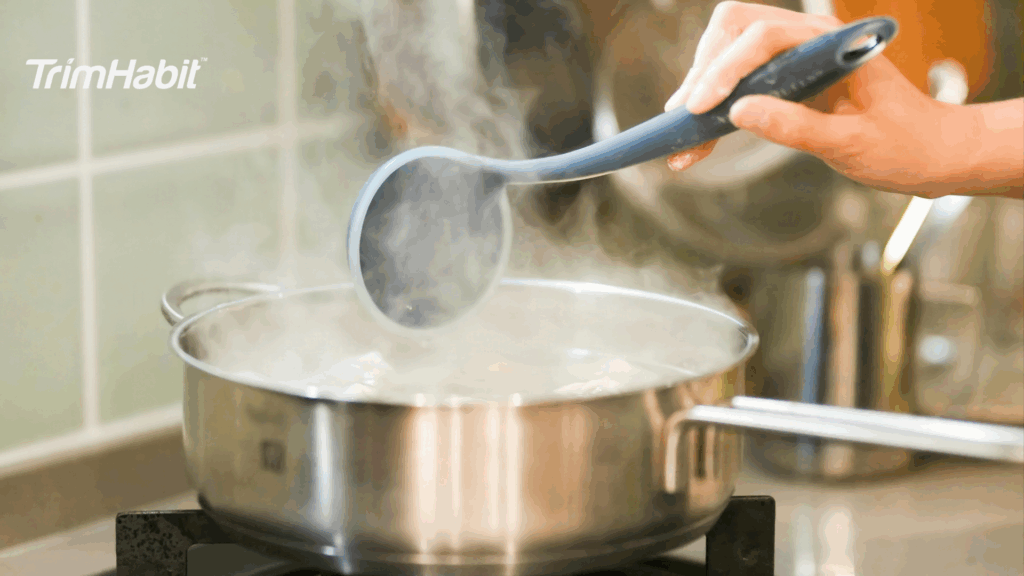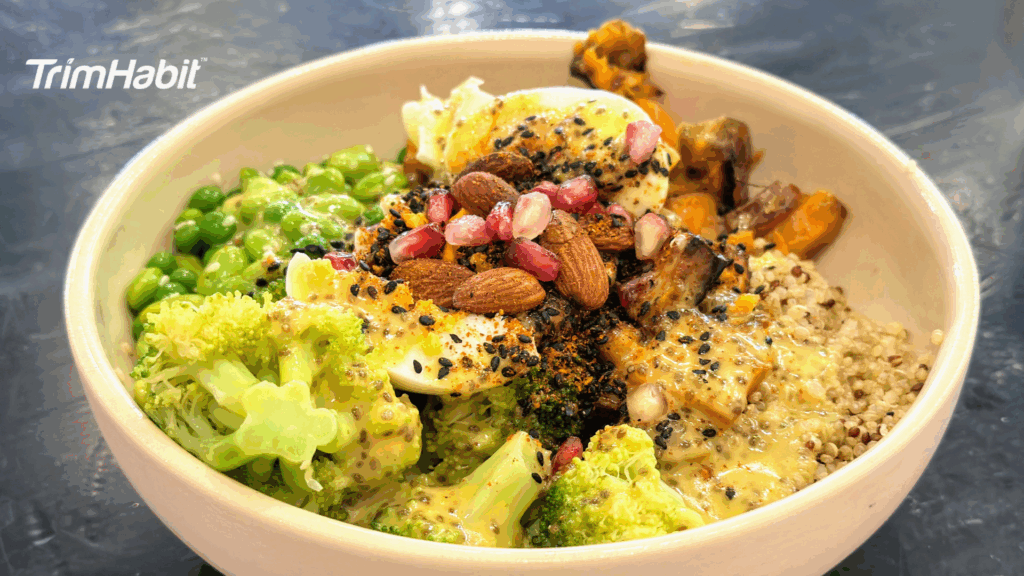If you have begun using semaglutide, you already know it can transform your eating habits and appetite control.
Yet one of the most important things to understand is how to keep muscle while losing weight on semaglutide, because your goal should go beyond a smaller number on the scale. Your muscle mass is what gives your body shape, strength, and balance, and protecting it helps you stay active and confident.
When you lose fat too quickly, your body might break down lean tissue for energy. This is a common challenge among individuals who experience rapid weight loss, particularly when their calorie intake drops significantly. The right plan ensures that the weight you lose comes mainly from fat rather than muscle. When you focus on nourishing your muscles, you protect both your progress and your long-term health.
Understanding How Semaglutide Affects Muscle
Semaglutide influences your metabolism through GLP-1 receptor activity, which slows down digestion and helps stabilize blood sugar levels. This effect helps curb appetite and supports steady weight loss, making it one of the most potent weight loss drugs available today1. However, as your body weight decreases, your body can also lose essential lean mass if you are not careful.
Many people notice that the pounds come off quickly, but they may also feel weaker or less toned because of muscle mass loss. The goal is to stay alert to these changes and adjust your habits to maintain muscle mass even as you slim down. Protecting lean tissue is what keeps you strong enough to move well and maintain your physical function. Without that balance, your progress may come at the cost of your strength.
Why Muscle Preservation Should Be Your Priority
Muscle is more than what defines your shape; it determines how efficiently your body works. Preserving it during weight loss medication use is essential because muscle keeps your metabolism active, supports bone health, and influences your energy levels2,3. Losing too much muscle can reduce your metabolic rate, slow your recovery, and make it harder to keep the weight off later.
During your weight loss journey, consider your muscles as the foundation, not a secondary concern. When research suggests that muscle loss increases weakness and fatigue3, it highlights the importance of fueling your body correctly. Healthy muscle tissue acts as your body’s engine, driving energy and endurance through each day. Maintaining strength gives you better balance, more resilience, and confidence in every step you take.
Exercise: The Key To Muscle Maintenance
Exercise is your strongest defense against muscle loss while using semaglutide. Incorporating resistance training and strength training into your routine helps your body stimulate muscle growth and minimize lean mass loss. Even if you are new to fitness, you can start small with push-ups, resistance bands, or lifting weights at home to build consistency. Over time, these movements activate your major muscle groups and support muscle preservation through protein synthesis.
As your muscles repair and grow, you’ll find yourself with more muscle and less fatigue, even when your calories are lower. Make sure to combine your workouts with regular exercise such as walking or cycling, which improves circulation and recovery. The goal is not just to burn calories but to preserve muscle and keep your strength stable as your body composition changes.
Eating To Protect Muscle Strength
Nutrition plays a critical role in how your body adapts to semaglutide. Since the medication curbs appetite, you must be intentional about getting adequate protein to support recovery.
Protein provides the essential amino acids your muscles need for repair and recovery. Eating lean proteins like eggs, fish, and lean meats can help preserve lean muscle while promoting muscle growth. You might also notice that eating balanced meals reduces cravings and helps regulate insulin resistance more effectively.
Combining protein with complex carbohydrates and healthy fats ensures steady energy for weight training and better workout performance. When you feed your muscles properly, you help your body recover, adapt, and continue to preserve muscle mass during fat loss.
Avoiding Muscle Wasting And Fatigue
If your calorie intake becomes too low, your body may begin breaking down muscle for fuel, leading to muscle wasting. This usually happens when you skip meals or rely too heavily on low-calorie snacks without sufficient protein.
Losing lean body mass this way can leave you feeling sluggish and weak, affecting both your mood and motivation. You might even experience muscle cramps or soreness because of poor hydration or low electrolytes.
To prevent muscle loss, focus on nourishing foods that balance energy and protein while supporting recovery. Include whole grains, colorful vegetables, and healthy fats to complement your protein sources. Avoid extreme restrictions that lead to burnout or rebound weight gain; the goal is to build habits that support sustainable weight loss and lasting wellness.
Building Strength With Progressive Training
When you begin exercising on semaglutide, remember that building strength takes time. Start slowly with manageable routines, then gradually increase resistance to challenge your body. This process improves endurance, coordination, and muscle function while keeping your lean muscle intact.
Many people find that as they continue weight lifting and weight training, their muscle protein utilization improves, leading to faster recovery. If you are consistent, you will see lean mass improvements even while your fat stores decrease.
Proper training prevents lean mass loss and enhances body composition, giving your body a toned, firm appearance. These small, steady efforts help you preserve muscle, protect your joints, and improve body fat distribution over time.
Balancing Diet And Lifestyle
To achieve weight loss without compromising health, you must view nutrition, exercise, and recovery as equal parts of your plan. Eating a balanced diet filled with whole foods helps stabilize your energy, making it easier to manage hunger and activity levels. Include sources that aid muscle protein repair, such as dairy, soy, and legumes, which are rich in essential amino acids.
Hydration also supports muscle preservation, as water helps transport nutrients to cells and supports muscle repair after workouts. Tracking your total body weight can be helpful, but focus more on how you feel and how your clothes fit rather than numbers alone. As you refine your routine, your weight management success will reflect not only weight lost but also strength gained. This balance is what leads to a truly healthy weight and a stronger, more capable body.
How To Keep Muscle While Losing Weight On Semaglutide: One-Week Schedule
Having a clear weekly structure can help you protect your strength and energy while supporting steady fat loss. Because semaglutide affects appetite and digestion, your routine should give your body consistent nourishment, hydration, and movement. It is also important to remember that semaglutide dosage timing depends on the form you are taking. Injectable versions are usually taken once a week, while the oral form is taken daily before the first meal with a small amount of water. This plan is designed to help you stay consistent regardless of which form you use, giving your body what it needs to stay strong and balanced.
Day 1 – Reset and Refuel
Start your week with structure. Take your semaglutide dose as prescribed, pairing it with a balanced breakfast such as scrambled eggs with vegetables and whole grain toast. Eat slowly so your body can recognize fullness cues. Include an afternoon walk or gentle stretching to keep circulation active. Dinner can include grilled chicken, roasted sweet potatoes, and steamed greens. Go to bed early to support recovery and hormone balance.
Day 2 – Strength and Structure
Focus on movement and protein intake today. Have Greek yogurt with berries for breakfast, then complete a short resistance workout in the afternoon using body weight or light dumbbells. Keep snacks simple such as a handful of nuts or cottage cheese to avoid long gaps without food. Dinner might include salmon, quinoa, and roasted vegetables. Stay hydrated throughout the day, especially if your energy begins to dip.
Day 3 – Light Activity and Digestion Support
Since semaglutide can slow digestion, make this day about lighter meals and steady activity. Have oatmeal with chia seeds in the morning and grilled tofu with brown rice for lunch. Include a brisk walk or yoga session to support blood flow and digestion. For dinner, enjoy a lean meat stir fry with vegetables and a small portion of rice. Avoid eating too close to bedtime to help your body rest comfortably.
Day 4 – Midweek Recovery
This is your recovery day, perfect for stretching or a slow paced walk. Take your dose at the same time as usual to maintain consistency. For meals, aim for steady energy. Smoothies with protein powder and spinach work well for breakfast, and lentil soup or baked fish for lunch. Dinner can include turkey, mashed potatoes, and a side of broccoli. Getting enough sleep is key to muscle repair and to avoid losing muscle during calorie reduction.
Day 5 – Focused Training and Fuel
This is a good day for strength or resistance training. Have a balanced breakfast with eggs and avocado toast before your workout. Afterward, refuel with something rich in protein and complex carbohydrates such as grilled chicken with quinoa. Keep snacks nutrient dense, like boiled eggs or edamame. Finish the day with a balanced dinner of lean beef, vegetables, and whole grains to rebuild muscle tissue.
Day 6 – Hydration and Balance
Keep hydration your main focus. Semaglutide may suppress thirst cues, so make sure you drink water consistently throughout the day. Meals should include hydrating foods such as cucumbers, berries, and soups. Add healthy fats like olive oil or nuts to support hormone balance. Take a walk outdoors to reduce stress and promote digestion. Gentle evening stretching helps your muscles stay flexible and relaxed.
Day 7 – Reflection and Planning
End the week with light movement and reflection on your progress. Have a high protein breakfast such as an omelet with vegetables and a nourishing lunch with chicken, beans, and brown rice. Take time to plan your meals for the upcoming week to stay prepared and avoid last minute choices. Stay consistent with your medication schedule and notice how your energy, strength, and appetite respond. The more steady your habits, the easier it becomes to maintain muscle while continuing your progress.
Protecting Your Strength Long Term
Your ultimate goal is to preserve muscle, sustain energy, and keep your results consistent. The right combination of exercise, nutrition, and patience allows your body to adapt to semaglutide safely and effectively.
Even if semaglutide muscle loss occurs early on, it can be reversed through consistent effort and smart adjustments. Make sure your meals support fat loss without reducing the nutrients needed to preserve muscle mass. Focus on building muscle through steady training, rest, and recovery to enhance your metabolism and confidence.
Over time, these habits will help you enjoy successful weight loss that feels strong and empowering. Remember that an effective weight loss solution means more than shedding pounds. It also means protecting your strength, your health, and your confidence for the future.









